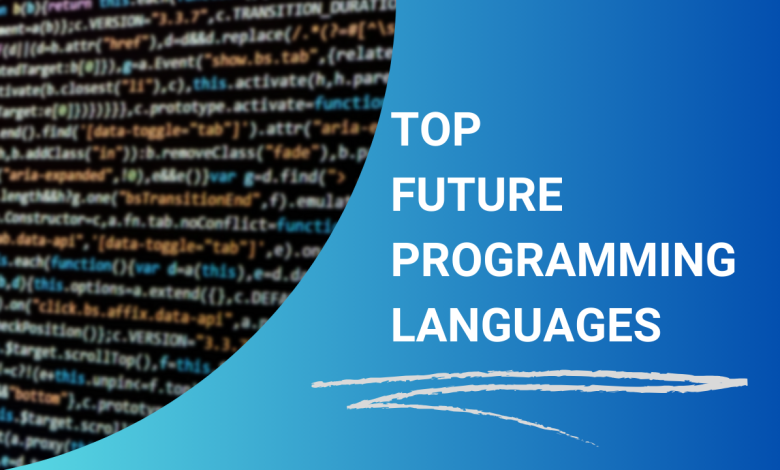Top Programming Languages to Learn for the Next Decade

The world of programming evolves rapidly, and with each passing year, new technologies, frameworks, and languages rise to prominence. For developers who want to future-proof their careers, knowing which programming languages will dominate in the coming decade is essential. This article explores the top programming languages worth learning for the next 10 years, explaining why they matter, where they’re used, and how they’re shaping the future of software development.
1. Python
Why It Matters
Python continues to be one of the most versatile and widely used programming languages. Its simplicity, readability, and extensive libraries make it ideal for beginners and professionals alike.
Key Areas of Use
- Artificial Intelligence (AI) and Machine Learning (ML)
- Data Science and Analytics
- Web Development (Django, Flask)
- Automation and Scripting
Future Outlook
As AI and data-driven technologies continue to grow, Python’s relevance will only strengthen. Its dominance in the AI/ML ecosystem makes it a must-learn language for the future.
2. JavaScript (and TypeScript)
Why It Matters
JavaScript remains the backbone of web development, powering dynamic and interactive websites. TypeScript, a superset of JavaScript, adds type safety and scalability, making it increasingly popular.
Key Areas of Use
- Frontend Web Development (React, Vue, Angular)
- Backend Development (Node.js)
- Mobile Applications (React Native, Ionic)
Future Outlook
With the web at the center of digital transformation, JavaScript and TypeScript will continue to dominate, especially for full-stack development and cross-platform applications.
3. Java
Why It Matters
Java has been a mainstay of programming for over two decades. Known for its portability, scalability, and performance, it remains a key player in enterprise applications.
Key Areas of Use
- Enterprise Software
- Android Development
- Financial Systems
- Cloud-based Applications
Future Outlook
Java’s strong community and ongoing updates ensure its long-term presence, particularly in large-scale systems and enterprise-level applications.
4. Rust
Why It Matters
Rust is gaining momentum due to its focus on memory safety, performance, and concurrency without sacrificing speed.
Key Areas of Use
- Systems Programming
- Game Development
- Blockchain and Web3 Projects
- Embedded Systems
Future Outlook
As industries seek safer and more reliable software, Rust’s popularity will likely grow, especially in areas where performance and safety are critical.
5. Go (Golang)
Why It Matters
Created by Google, Go emphasizes simplicity, performance, and scalability. It’s particularly popular in cloud-native development.
Key Areas of Use
- Cloud Computing
- DevOps Tools
- Microservices
- Networking Applications
Future Outlook
With cloud computing and containerization (Docker, Kubernetes) continuing to dominate, Go’s demand will remain high.
6. Kotlin
Why It Matters
Kotlin has rapidly gained traction as the preferred language for Android development, backed by Google’s official support.
Key Areas of Use
- Android Apps
- Backend Development
- Cross-platform Development (Kotlin Multiplatform)
Future Outlook
With mobile technology advancing, Kotlin’s ecosystem will continue to expand, making it essential for developers targeting Android.
7. C#
Why It Matters
C# is central to the Microsoft ecosystem and has proven highly adaptable across platforms.
Key Areas of Use
- Game Development (Unity)
- Enterprise Applications
- Desktop Software
- Cloud Services (Azure)
Future Outlook
Given Microsoft’s continued innovation and the growth of game development, C# will remain highly relevant.
8. Swift
Why It Matters
Swift is Apple’s modern programming language for iOS, macOS, and watchOS applications.
Key Areas of Use
- iOS App Development
- macOS Applications
- Cross-platform Mobile Apps (with SwiftUI)
Future Outlook
With Apple products maintaining a strong global presence, Swift will continue to be a crucial language for developers building apps within Apple’s ecosystem.
9. SQL (and New Data Query Languages)
Why It Matters
Data is at the core of modern applications, and SQL remains the standard for managing relational databases.
Key Areas of Use
- Database Management
- Data Analysis
- Business Intelligence
- Cloud Databases
Future Outlook
As big data and analytics expand, SQL and modern query languages (like GraphQL) will remain critical for handling massive amounts of data.
10. Julia
Why It Matters
Julia is designed for high-performance computing, making it ideal for scientific research and numerical analysis.
Key Areas of Use
- Data Science
- Machine Learning
- Scientific Computing
- High-Performance Simulations
Future Outlook
While still emerging, Julia’s potential in scientific and research communities could make it a significant language in specialized fields.
Conclusion
The next decade of programming will be shaped by languages that balance simplicity, scalability, and adaptability. Python and JavaScript will continue to dominate mainstream development, while languages like Rust, Go, and Julia represent the future of specialized and performance-critical applications. Developers who stay adaptable and learn a mix of these languages will be well-positioned to thrive in the rapidly evolving tech landscape.
The key takeaway: don’t just learn one language—master a toolkit that equips you for the diverse and dynamic future of software development.

